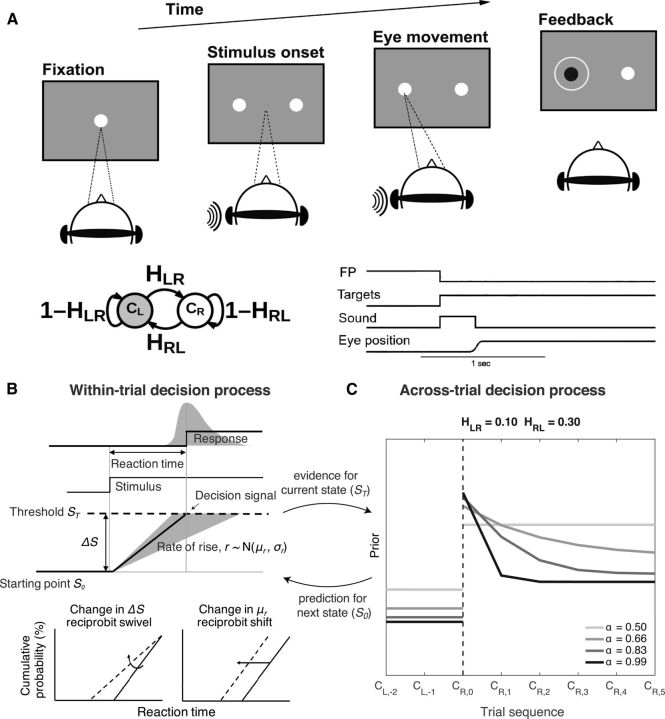Figure 1.
Task and models. A, Task schematic and the timing of task events on a single trial. The task required the subject to make a saccadic eye movement to a visual choice target in the direction of the perceived sound (left or right). We used fixed generative hazard rates (H) to control transition probabilities between the two generative states (CL or CR, indicating that the sound is generated from the left or right, respectively), as shown on the left. B, Basic LATER model, in which saccadic RT distributions are determined by a linear accumulating process with trial-to-trial variability in its rate of rise and predetermined starting (S0) and ending (ST) points. Changes in the difference between these points (ΔS) are sensitive to prior expectations, whereas changes in the average rate of rise (μr) are sensitive to stimulus difficulty. These effects show up as a “swivel” or “shift” of RT distributions plotted on a reciprobit scale, respectively (Carpenter and Williams, 1995; Reddi et al., 2003). C, Predictions of the adaptive LATER model for adaptive changes in priors (specifically, the log-prior-odds of the sound being on the right vs left side, as defined in Eq. 4) as a function of trials relative to a change point from CL to CR (the additional, numerical subscripts indicate the trial number relative to the change point at trial 0). According to normative theory, prior expectations should be sensitive to expected transition probabilities (compare values before and after the change point, indicated by the vertical dashed line) and the weight of evidence for the current state (compare the rate of change of values as a function of trials after the change point for the different values of α from Eq. 5) (Glaze et al., 2015). Our findings indicate bidirectional coupling between these within-saccade (B) and across-saccade (C) processes, such that the total amount of evidence accumulated within a trial to trigger a saccade (the saccade-generation threshold, ST) determines the weight of evidence for the current state (α) that is accumulated across trials to govern changes in priors that affect S0.

